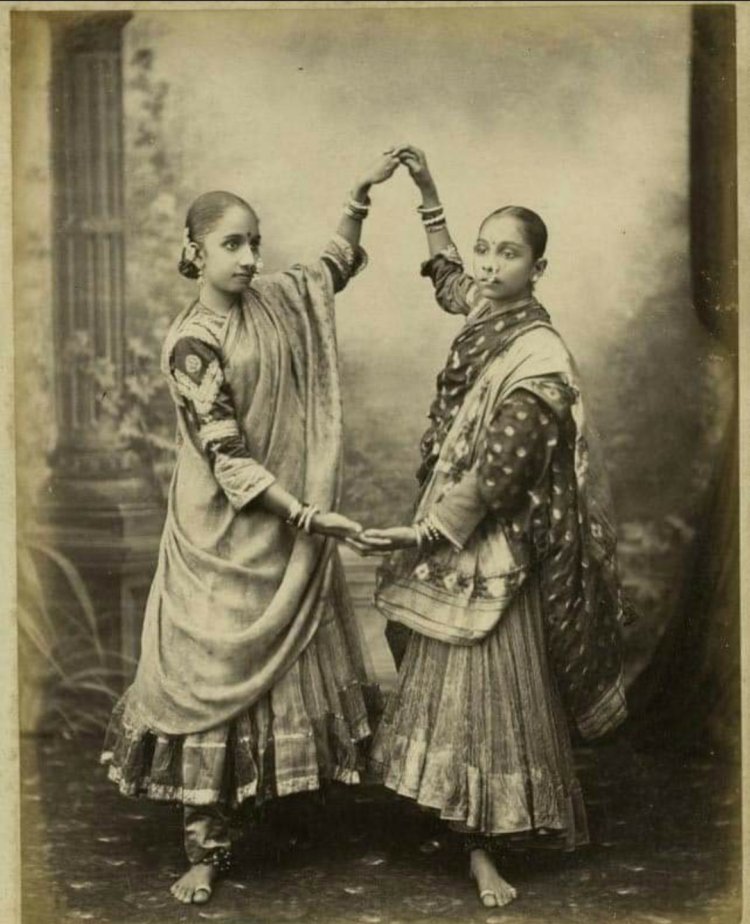TAWA’IF BAAZI THE COURTESAN CULTURE OF LUCKNOW:


TAWA’IF BAAZI
THE COURTESAN CULTURE OF LUCKNOW:
Lucknow occupies an important place in the cultural imagination of 19th century India. The cultural accomplishments of this time and place have resonated well beyond its borders and today its memories are still capable of evoking a potent sense of nostalgia. That such memories should so passionately endure, is testimony to the special place that the arts occupied in the life of this city.
Memories of Lucknow’s heritage are often recalled through its “tawa’if baazi” or courtesan culture. The broader north Indian cultural canvas was referred to as Ganga-Jamuni Tahzeeb and functioned to elaborate rich Mughal traditions through the marriage of Persian aesthetics and Indian values.
Tawa’if or courtesan had an important place in 19th century Awadh.
The term 'tawa’if' - is derived from the Arabic word 'tawa’f'; the word connotes movement and mobility. One of the earliest references to the term ‘tawa’if’ appears in an eighteenth-century collection of biographies of notable poets. The entry cites the following poetic couplet:
Akhla’aq say towe upn’aye waqif jahan hoga
Per aap ko ghalutt kuch, ub tak gum'an hoga
(The world is aware of my virtues/ Yet you still have your doubts.)
Large-scale migrations during the eighteenth century of musicians and other performing artists from Delhi to Lucknow had also contributed immensely in expanding the reach and depth of tawa’if baazi amid a developing Lakhnavi culture.
It is firstly necessary to consider the significant degree of ethnic, caste and artistic diversity that existed within the tawa’if community. As was the case with many occupational specialists in pre-modern India, the conditions and status of a courtesan was often closely linked to the fortune of their patrons. Those courtesans engaged through royal patronage and resident in the harem or in the Pari Khana of Wajid Ali Shah, were necessarily well provided for. However, outside of this privileged environment, majority of them were engaged by households of the wealthy or were employed in kothas (bordellos, salons, brothels) in the bazaar. Chowk was the name of one of the largest bazaars in Lucknow where courtesans generally resided in upper-storey apartments known as kothas. The more famous ones who catered to the nobility and the elite had their own palatial residences.
The quality of these kothas and the type of patronage that they attracted varied considerably, depending on the means and physical location of the establishment. Those kothas tended to cater for a lower socio-economic group than those located closer to the centre. The more salubrious establishments serviced the wealthier sections of society and their courtesans were known for their sophisticated and refined manners, conversation and performance. Some courtesans within this environment gained sufficient social status and respect for their manners and etiquette.
It was not uncommon for the house of the chief courtesan, or chaudhrayan, of the more sophisticated kotha to be the chief meeting place for the most important musicians in the city and those visiting from elsewhere (Sharar 1975:139). Respectable outside women – ‘khangi’, also used these establishments for their own liaisons (Oldenberg 1998:140).
Cole is of the opinion that most of Lucknow’s courtesans were from the lower castes, which often came from the rank of widows. Sharar describes three groups drawn from the lower castes as the "queens of the bazaar” which he identifies as Kanchani, Chuna Wali and Nagarny. The Kanchan were from Delhi and Punjab and mostly worked as prostitutes, the Nagarny were from Gujarat while the Chuna Walis are not associated with any one region (Sharar 1975:146). It appears that these three groups were equally renowned for prostitution as for musical or dance expertise but that each could also accommodate women from other backgrounds within their fold. The tawa’if of these groups, were also sometimes referred to as thakahi and randi.
References:
Article by Sarah Waheed in Cambridge Journal, April 2014.
Imam (1959). Crooke (1974). Neuman (1980). McNeil (2004).
Dancing girls of Lahore. Documentary, United Kingdom.
Courtesy. Ibrahim A. Khan Asif.
Lucknow

















